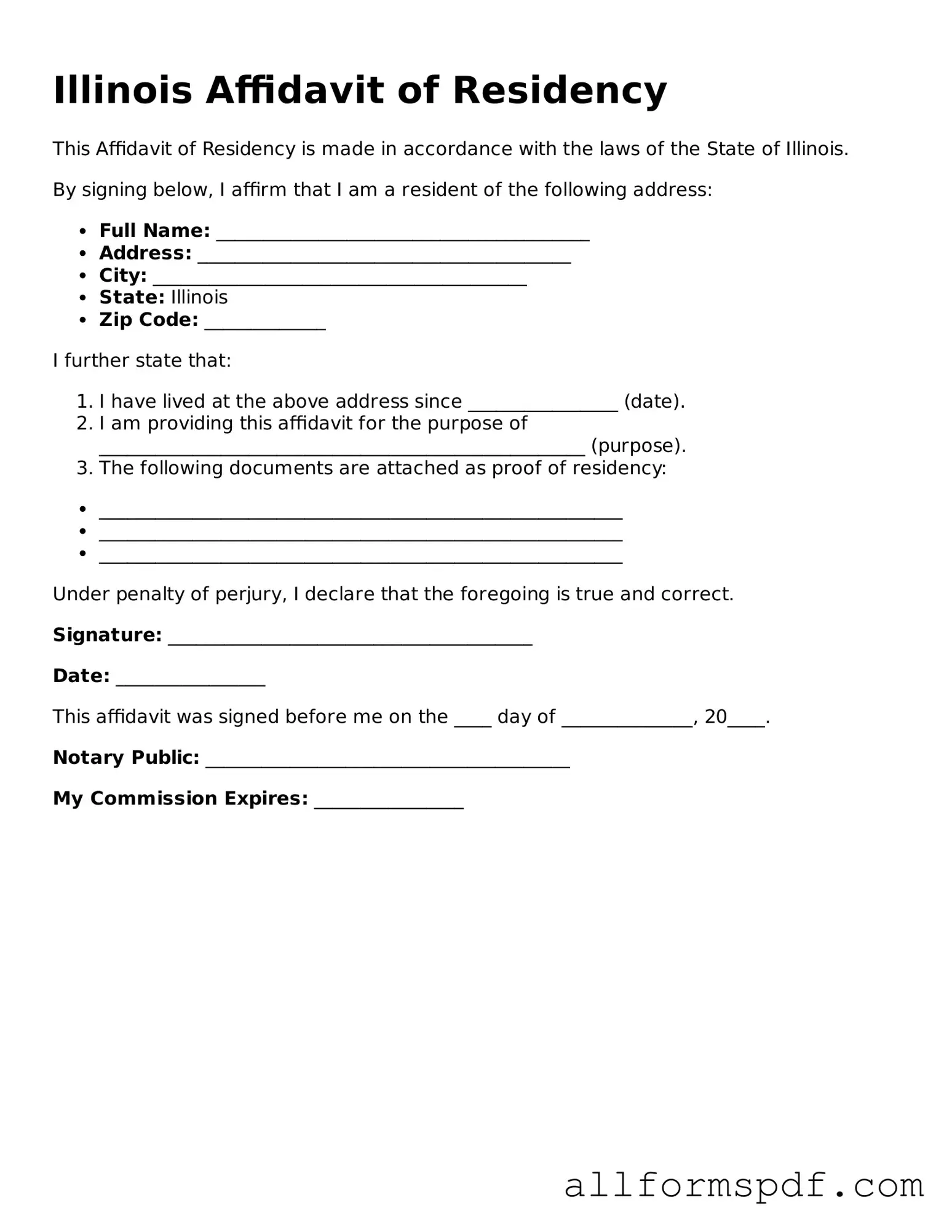Filling out the Illinois Affidavit of Residency form can be a straightforward process, but many individuals make common mistakes that can lead to delays or complications. Understanding these pitfalls can help ensure a smoother experience. One frequent error occurs when individuals fail to provide accurate information about their residency. It is crucial to include the correct address and verify that it matches official documents. Inaccuracies can raise questions and potentially invalidate the affidavit.
Another mistake often seen is neglecting to sign the form. The affidavit requires a signature to confirm that the information provided is true and correct. Without a signature, the document may be considered incomplete, leading to further issues. Additionally, some people forget to date the form. A missing date can create confusion about when the affidavit was completed, which may affect its validity.
Some individuals also overlook the requirement for witnesses. In Illinois, certain affidavits need to be signed in the presence of a witness. Failing to include a witness signature can render the affidavit ineffective. It’s essential to understand the specific requirements for the affidavit being completed, as this varies by circumstance.
Moreover, individuals sometimes submit the affidavit without reviewing it thoroughly. Typos or omissions can undermine the credibility of the document. Taking a moment to double-check for errors can save time and prevent potential legal issues down the line. A careful review helps ensure that all necessary information is included and that the form is filled out correctly.
Lastly, many people do not keep a copy of the submitted affidavit. Retaining a copy is important for personal records and future reference. If questions arise later, having a copy can help clarify any misunderstandings or disputes. By avoiding these common mistakes, individuals can navigate the process of filling out the Illinois Affidavit of Residency with greater confidence and efficiency.
